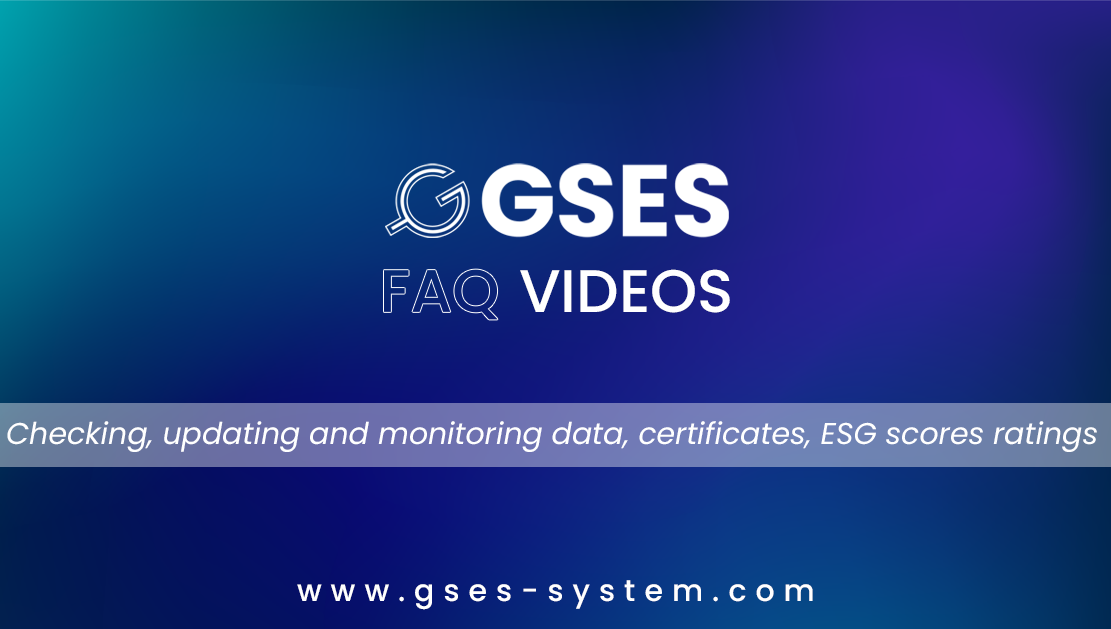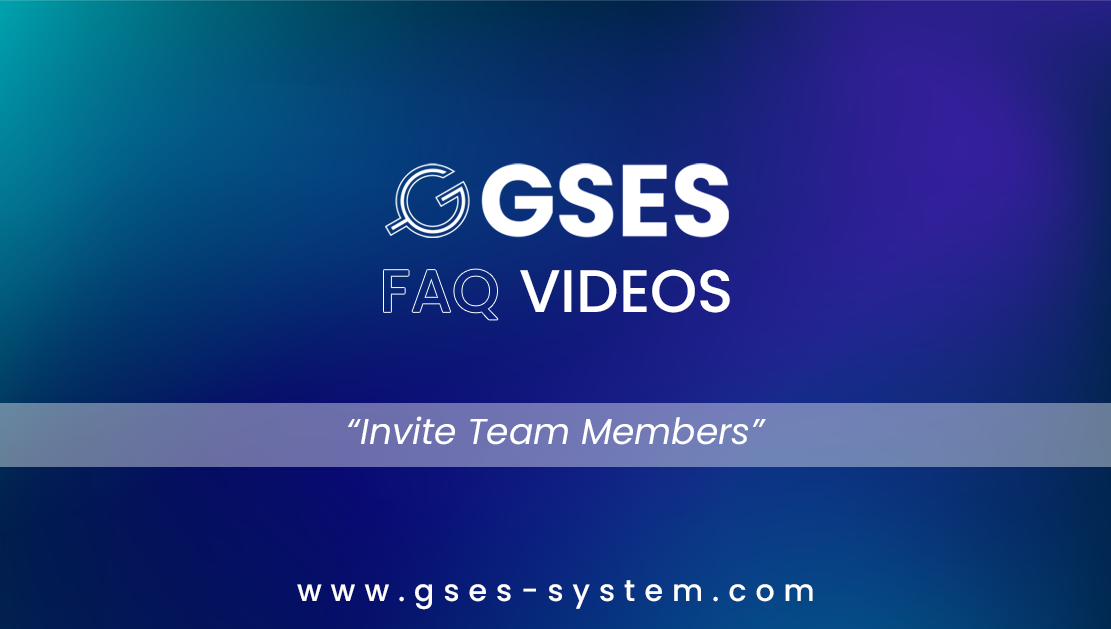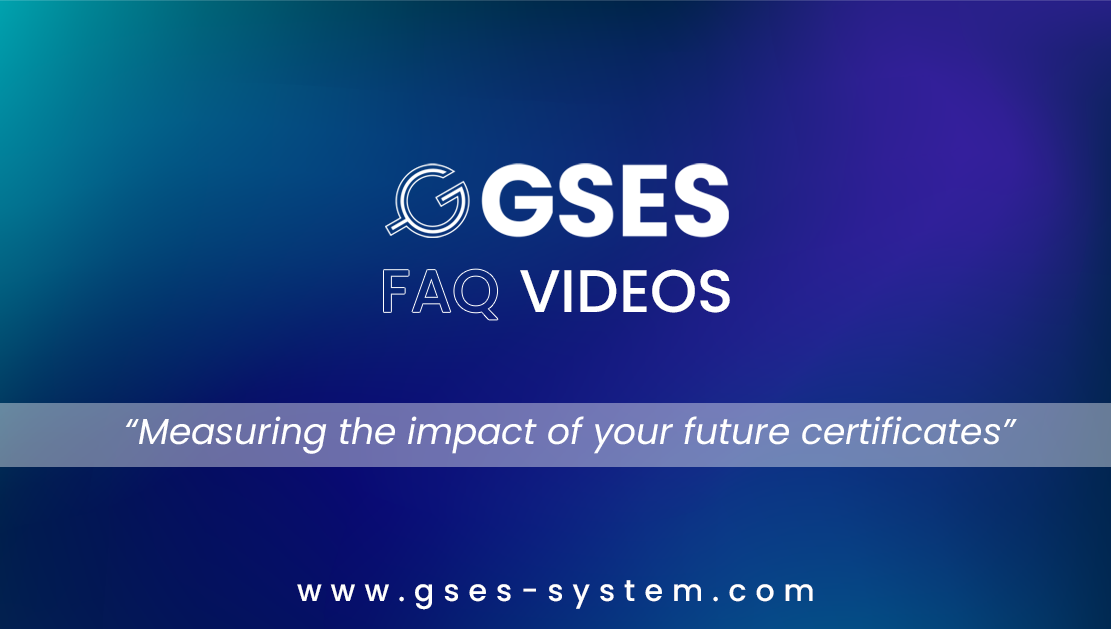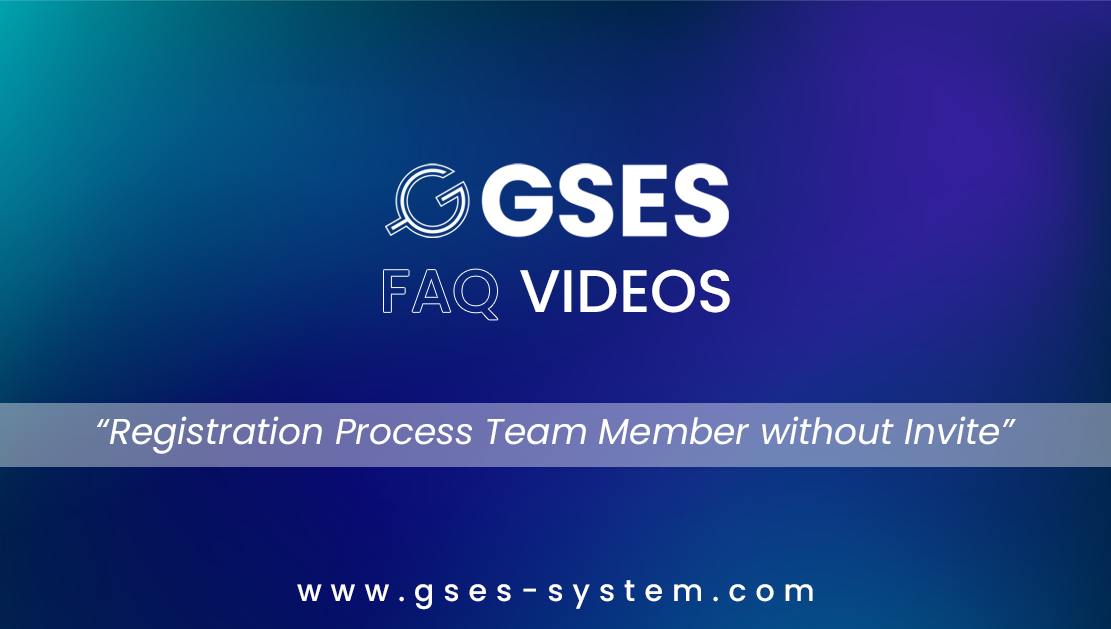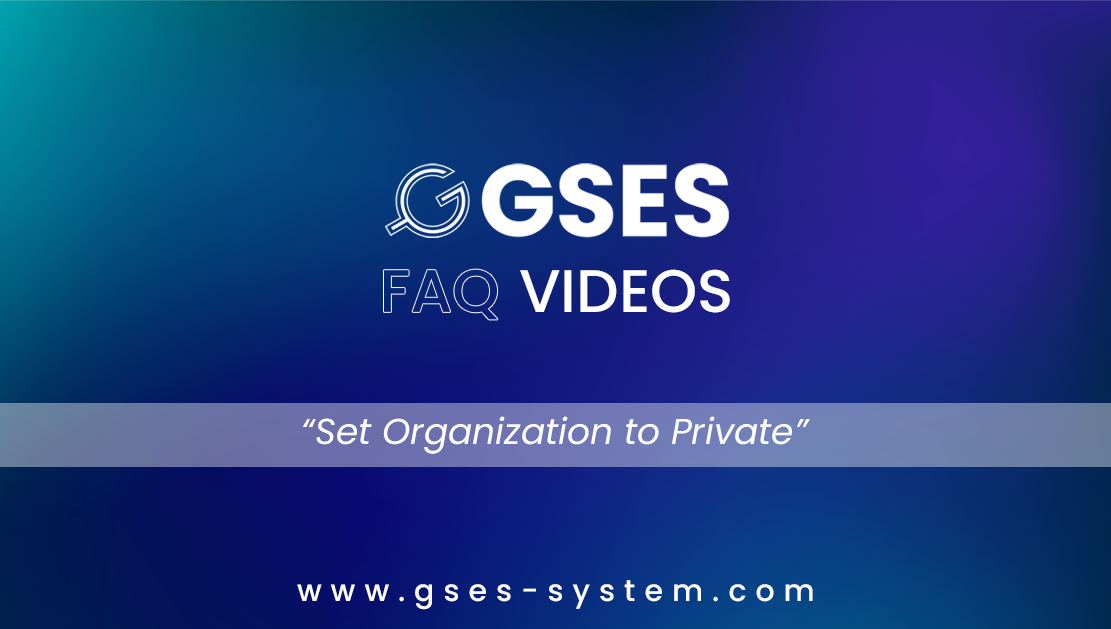
GSES System library downloads
Handbooks
Frequently asked questions:
The GSE Meta Standard (Global Sustainable Metastandard) is an overarching standard that benchmarks over 550 existing certifications and ecolabels enabling the only scalable way to verify the sustainability and ESG data driven decision making.
The GSE Standard (Global Sustainable Enterprise Standard) is the benchmark of the GSE Metastandard (Global Sustainable Metastandard), based on the research our experts and partners did on what and how the 550+ ecolabels and certifications that are already existing in the world measure and how are they verified. The market identified 6 main topics of sustainability relating to the 6 pillars in the GSE metastandard and the GSE Standard.
Every pillar of the GSE Standard and GSE Metastandard is linked to an ISO and UNDP guideline created globally to enable sustainability reporting on different topics:
• CSR pillar = based on the ISO 26000 and the outcome after verification of the online assessment = GSES Corporate Social Responsibility certificate ISO 26000 compliance
• Sustainable Procurement pillar = based on the ISO 20400 and the outcome after verification of the online assessment = GSES Sustainable Procurement certificate ISO 20400 compliance
• Carbon reduction = based on ISO 50001, ISO 14064-1 and the outcome after verification of the online assessment = GSES Carbon reduction certificate based on ISO 50001 and ISO 14064-1
• Biodiversity = based on the BS 8683 and the outcome after verification of the online assessment = GSES Biodiversity certification
• Health & Safety = based on the ISO 45001 and the outcome after verification of the online assessment = GSES Health and Safety certification based on ISO 45001
• Circular Economy = based on the BS 8001 and the outcome after verification of the online assessment = GSES Circular Economy certification BS 8001 based on BS 8001
Here you see that every pillar of the GSE Standard as well as the GSE Metastandard are based on internationally accepted standards and guidelines acknowledged by governments and cross- sectoral industries. We digitalised this standard into an online platform.
The OECD has developed Due Diligence Guidance for Responsible Business Conduct, which provides practical support to enterprises on the implementation of the OECD Guidelines. These are guidelines for companies on how to deal with issues such as supply chain responsibility, human rights, child labor, environment and corruption.
GSES applies the OECD Due Diligence Guidance for Responsible Business Conduct to its six pillars and supply chain approach.
In alignment with the global endeavour, GSES stands in endorsement of the 17 SDGs. The GSES System takes on the pivotal role of seamlessly weaving these global objectives into organisational processes and engagements across value chains and broader stakeholders. Through a systematic alignment of GSE-Standard pillars with the 17 SDGs, we endeavour to underscore the multi-dimensional impact of the Standard within a worldwide framework. Notably, the synergy between GSE-Standard and the SDGs serves to underscore the profound capacity we collectively hold as stewards of our planet to transform our organisations into catalysts for a brighter future.
The CO2 pillar in the GSES System is based on ISO 14064-1: 2012 guidance at the organisation level for quantification and reporting of greenhouse gas emissions and removals. This ISO standard contains requirements for design, development, management, reporting and verification of the greenhouse gas emissions ‘accounting’ of the organisation.
Organisations that already have a valid CO2 Prestatieladder certificate also automatically receive points on the GSES CO2 pillar and, depending on the level of the certificate, even an exemption on the GSES CO2 pillar.
The CSR pillar in the GSES System is based on ISO 26000 guidelines, the HLS, GRI and OECD guidelines. Because the MVO Prestatieladder offers a practical addition to the ISO 26000 guideline, the CSR performance ladder is included as an exemption in the GSES System.
The MVO prestatieladder is included in the Sustainable Meta Standard that is integrated into the GSES System. Therefore organizations that already have a valid MVO Prestatieladder certificate automatically receive points (and even exemptions) for the score on the GSES CSR pillar, depending on the level of the certificate.
Yes, the GSES system can be used as a procurement tool. The supplier functionality on the online GSES platform offers participants the opportunity to invite and rank their suppliers on standardized and internationally accepted sustainability themes such as CSR, Sustainable Procurement, CO2 Reduction, Circular Economy, Health & Safety and Supply Chain transparency and collaboration.
After the suppliers publish their scores of the themes of your choice in the form of a validated assessment, a ranking of suppliers appears on your supplier dashboard.
Change can be only achieved through collaboration and joining forces, both locally, nationally and internationally. One willing organisation (unless very large) does not have the ability to change the rules on its own. The NDI is active in creating a Coalition of the Willing and has a multi-stakeholder approach and organises multi-stakeholder consultations.
The strength of the GSES system is that it stimulates and influences stakeholders inside and outside of the value chain. Furthermore, change will come by involving consumers, who can scan QR codes to view the sustainability performance of organisations and products on the GSES Score Card.
Not with the Desk Audit capability of GSES System! The GSES Standard audits are assigned by an audit intermediary to one of the Verification / Certifying Institutions, which perform the audit remotely and provide feedback on the results. And the current costs is €250 excluding VAT per pillar – per assessment.
Still an ‘old-fashioned’ on-site audit?! That too is possible! The prices are available on request. To complete the GSES Standard questionnaires you need a GSES Pro Membership. More information about this: https://gses-system.com/prices/.
You are of course free to obtain (also) other certificates and reports and to exempt them through the GSES Metastandard validation. The GSES Standards are the only generic and overarching standards worldwide and can therefore be used for every sector and every company size.
GSES Metastandard
– To benchmark your own organization and rate on the current situation of
certificates and reports in accordance with the GSES Metastandard.
– To benchmark your supplier(s) / supply chain and rate them on their current
situation of certificates and reports in accordance with the GSES Metastandard and
to engage in risk monitoring and chain responsibility.
GSES Standard
-To improve your own organization on one or more pillars on
organizational level in accordance with the GSES Standard.
– To improve your supplier(s) / supply chain on one or more pillars on
organisational level in accordance with the GSES Standard and to engage in risk
monitoring and chain responsibility.
GSES Footprint
– To measure your products and projects on the Circular, Health and Environmental
Footprints and distinguish your products on these footprints from other products and
projects.
By enabling sustainable entrepreneurs to measure and visualize their performance on the various themes of sustainability, we are offering them the tools to increase their market share and impact – in the B2B and B2C markets. This way, we are constantly expanding the new economy on both a national and an international level.
The 3 types of GSES Membership, to help you and measure sustainability at an organizational level, each have their own functionalities on the GSES System platform.
– Limited Membership
– Pro Membership
– Full Membership
More information, pricing and functionalities: https://gses-system.com/prices/
You can inquire about this internally with your organization or contact us by e-mail via support@gsessystem.com
Please note; If you contact us, you must do this with an email account from your organization. This is for security reasons
Your organization’s GSES Scorecard will be and/or published in our public GSES Database. It is therefore transparent and accessible to many.
Your GSES Scorecard can also be linked to their ‘Procurement Dashboards’ by one or more GSES Full Members. Partly because of this, these GSES Full Member organisations also buy in sustainability. Or use it at RFP / Tenders and there are many more possibilities
If your organization is listed in the GSES Database, this can be easily found via: https://platform.gses-system.com/organizations
After successfully logging in, click on ‘Meta-Standard’ and you can upload all your obtained certificates and/or reports and have them exempted on the ‘GSES Metastandard’. The standard that covers many hundreds of certificates and reports such as ISO 9001, ISO 14001, EcoVadis, etc. Your certificates and/or reports are validated and therefore checked by verifying and/or certifying institutions.
More information about the GSES Metastandard: https://gses-system.com/metastandard-exemptions/
GSES will provide the customer with a product that is continuously developed further with new functions, improvements and legal amendments. This product is called GSES System Platform and is made available as a standard through the GSES online system. This section contains information about development, version management, system requirements, and product support.
Services and responsibilities:
GSES develops and delivers the software (GSES System Platform) and can, in most cases, take care of the implementation of this software to its customers. Customers are themselves responsible for the correct configuration of the application. If the application requires adjustment because of performance or security issues, GSES will contact the customer to implement the required adjustment and this service is included.
GSES ensures a correct delivery of applicable legislation in the software, for example, in relation to taxation matters and collective bargaining agreements (also known as collective labour agreements). The customer is responsible for correct application.
GSES is not responsible for the correct operation of links of additional software packages or additional services of third parties.
Property rights:
The intellectual property right of the products is vested and will continue to be vested on GSES. If a third party should claim that the intellectual property right of the software is vested on him or her, the customer shall indemnify the customer. A condition in relation to this is, however, that the customer informs GSES as soon as possible, cooperates with the investigation and leaves the settlement of the issue completely to GSES from this point on.
The property right with regard to the entered data and the data generated by the application is vested on the customer. GSES may not and shall not appropriate customer data.
A licence does not entitle the customer to what is commonly referred to as the source code. A separate agreement can be concluded for an escrow agreement.
Development and version management:
The software is continuously developed further and supplied with new functions, improvements and legal amendments. The delivery policy can be found on the customer portal.
Broadly speaking, GSES uses the following delivery schedule:
– Version: 2-3 times a year;
– Patch: On a daily basis if applicable.
Every version comes with release notes. They describe which components have been changed.
The migration date will be made definitive at least five days in advance. The total migration duration of the version is six to eight weeks. The data will not be available temporarily with regard to the migration from one version to the next.
The time during which the data will not be available is very dependent on a number of factors such as data conversion, size of the database and the quantity of records to be changed. Experience has shown that the maximum time is between 5 minutes and 2.5 hours. These activities are performed as much as possible outside office hours (Monday to Friday: 7 a.m. to 6 p.m.) and customers are notified well in advance.
Every report made to the Support Centre is referred to as an ‘incident’. An incident can be an error, fault, preference, set-up issue or user question.
Customers may be referred to Service Management with regard to set-up issues (for more information, see Service Management).
The administrator of the customer portal can determine who may contact the Support Centre on behalf of their organisation through the “employee” or “administrator” authorisation role. The support employee will check whether the contact has been given authorisation with regard to this with regard to each incident. If a user is not a contact with the organisation, support is not given by the support centre. employee. GSES expects that the customer maintains this issue because the customer is best placed to determine who are authorized.
If the Help Centre does not offer a solution, the customer can submit an incident to the Support Centre. The customer can contact the Support Centre immediately with regard to an immediate problem situation after registering the incident on the customer portal. After entering the incident number on the telephone, the customer will be connected directly with the support employee who is processing the incident.
The customer can follow the settlement of the incident through the customer portal. The customer will receive an update by email every time the status changes. The customer will be involved in the settlement of the incident and can add his or her response and other additional information. The re- store time with regard to a problem will depend on the seriousness and duration of the situation and the degree in which GSES depends on third parties for the performance of restore or repair activities.
The priority of the issue determines the response time. Most incidents are about issues that are related to knowledge about the product. These issues are often resolved the same day. If the issue is related to functionality that does not yet exist, that is, a preference, this is submitted to Product Management. It cannot always be indicated when and whether the preference will be fulfilled.
Every incident will be assigned a priority. It will be assigned by the support employee who processes the incident. The guidelines that we use for this are as follows:
– Priority 3: Informative issues/preferences: In 90% of cases, the same or the next day (if it is exceptionally busy, the customer will be informed about this).
– Priority 2: Problems that do not disrupt production: Restore time/workaround within one month insofar as this is possible.
– Priority 1: Production-disrupting problems: Restore time/workaround within five working days in- so far as this is possible. A restore time/workaround within one working days insofar as this is possible applies with regard to production-disrupting problems for First Class customers.
The Help Centre can always be consulted through the customer portal that will provide an answer to the asked questions in 90% of cases. If the Help Centre does not offer a solution, an incident can be submitted through the customer portal. The Support Centre will answer these questions from Monday to Thursday between 8 a.m. and 6 p.m. and on Fridays between 8 a.m. and 4 p.m. unless specified otherwise on the customer portal. The Support Centre can also be reached by telephone during these hours.
In addition, we offer an emergency service every working day from 6 a.m. to 8 a.m. and from 6 p.m. to 11 p.m. On Fridays, the emergency service is available from 4 p.m. to 11 p.m. as well as in the early morning. Emergencies can be submitted through the Support Centre where the person who submitted the emergency incident will be contacted within the hour.
GSES Platform is hosted on systems of professional Dutch data centres. These top-tier data centres have a network availability of 99.9%. The availability and performance of GSES Platform are monitored continuously.
GSES Platform may not be available in the following situations:
– Preventive maintenance;
– When a new version of GSES Platform is installed;
– When faults are resolved with regard to the software that fall under the responsibility of the customer;
– Maintenance that has been discussed and agreed with the customer;
– Emergencies or disasters as a result of natural disasters and other force majeure situations.
The customer shall be informed at least five days in advance if it is possible that GSES Platform may not be available. The activities will be performed between 9 p.m. and 7 a.m. or during weekends. Incidental patches and hot fixes are implemented automatically and without prenotification at night.
A backup is created four times a day of the entire production environment:
– The day backup is deleted after one day.
– The night backup is kept for 30 days and can be restored upon request. The average length of time
required to restore an environment is four hours.
If required, a backup of the environment can be requested through an incident for local use or archiving. GSES has a fair use policy with regard to these requests to prevent large data streams.
Systems, processes and users are monitored continuously on GSES Platform in the own Cyber Operations Centre where the objective is the following:
– Prevent interruptions and faults or resolve them at an early stage. Monitoring focuses on the timely discovery of faults and unwanted behaviour. An GSES employee is always available to re- solve faults and other emergencies immediately even at night. Checking on abuse is part of the (daily) standard monitoring activities.
– Collecting general user statistics such as response times. This information is analyzed and may be discussed with the customer for improvement purposes.
– Collection of anonymous statistics from the customer environment to improve our products and services.
GSES Platform has emergency procedures to prevent the loss of data through the system being down, physical destruction or some other way and to promote restoring this data. Every customer is assigned a data centre. The data centres have redundant technologies so that some servers or storage being down will not lead immediately to an emergency. If required, contingency measures to use another data centre are in place.
If a data centre should be down completely, computer resources are no longer available. This would then affect half of customers roughly. At that moment, additional computer capacity will be made available in the other data centre. The RPO (recovery point objective) is the maximum time that data loss can occur when a system goes down fully. RTO = max. 12 hours. The RTO (recovery time objective) is the time that is required to make the available backup available. The time that is required for this is not known. The different failures and faults have their own solutions and therefore also their own RPO and RTO.
Liability issues in Europe shall run through GSES Management. (no platform or software owner/manager/developer) based in the Netherlands. GSES cannot rely on liability restrictions if intent and/or wilful recklessness in its actions or of its employees or the third parties that it engages are involved.
GSES excludes its liability with regard to any form of consequential losses such as lost sales or profits and missed opportunities. The liability of GSES is also excluded if the customer or third parties engaged by the customer have made changes to the GSES products that are not allowed.
GSES and the customer are not liable with regard to each other if force majeure is involved. Force majeure is deemed to mean the following: Force majeure in the sense of the law including at suppliers of parties, unsound fulfilment of supplier obligations that are prescribed by the customer to GSES, interruptions to the electrical grid and faults or interruptions that impede data traffic insofar as the cause thereof cannot be blamed on the parties themselves.
GSES has combined professional and business liability insurance for exceptional emergencies that GSES cannot or does not wish to cover. This insurance is appropriate. For more information about the content and scope of this insurance, please request information.
GSES requires that the customer reports a complaint or claim as soon as possible to GSES. Not only can GSES then immediately work with the customer on a solution, but GSES must also report a claim to its insurer. For that matter, it continues to apply that GSES shall aim to find a suitable solution in consultation with the customer regardless of this complaint and/or claim.
If GSES should not meet a delivery period, the customer must first give GSES notice of default and give GSES a reasonable period any way to comply with its obligations.
GSES is fully aware that the information that the customer shares with GSES and saves within GSES Platform is confidential and is of a business-sensitive nature. All GSES employees must keep any data of the customer strictly confidential contractually
Only GSES Platform system administrators have full access to customer data for:
• Installing a new version;
• Implementing patches and hot fixes;
• Creating a backup;
• Moving data within the GSES Platform domain.
Consultants, Support Assistants and other GSES employees only have access to customer data if they have received permission for this from the customer and for as long as they have permission of the customer. Customers are themselves responsible for this through their own authorization tool within the application.
GSES shall process the customer data in data centers of TransIP and it is therefore a subprocessor. The data centers that GSES uses are only located in the Netherlands (Schiphol Rijk and Haarlem) and fall under the legislation and regulations of the Netherlands and comply with strict Dutch and European legislation with regard to logical and physical access security and continuity. The data centers are at least ISO 27001 certified.
GSES shall not have new subprocessors process data without informing the customer about this in a timely manner. The customer can inform GSES that the customer objects about the subprocessor. GSES shall settle these objections on a management level. If GSES should want to have data processed by the new objected subprocessor, the customer shall have the opportunity to terminate the agreement.
The customer is responsible for the entered data of data subjects and therefore for informing and assisting with regard to the rights of data subjects. GSES shall never respond to requests from data subjects and shall always refer them to the data controller. GSES shall cooperate insofar as this is possible within the application with the customer so that the customer can comply with the customer’s legal obligations in the case that a data subject exercises his or her rights based on the GDPR or other applicable regulations regarding the processing of personal data.
GSES shall continue to inform the customer about the progress and measures that are being taken. In any case, GSES shall keep the customer informed with regard to any change in the situation, when further information becomes known and about the measures that are taken.
GSES shall remove all customer data after the agreement has ended as described in “Termination of the agreement”. If the customer should wish the data to be removed before, a request for this can be submitted. GSES undertakes to comply with this.
– Your Username is the email address where you will receive this email.
– Or one of your colleagues has created a GSES Membership on behalf of your organization and acts as a contact person between you and GSES System.
– Request and create a new Password: https://platform.gses-system.com/forgot-password.
We are happy to give you a demo on the GSES System without any obligation and free of charge. You can request a demo here: https://gses-system.com/contact/.
Do you as a GSES Member just have a question: support@gses-system.com
